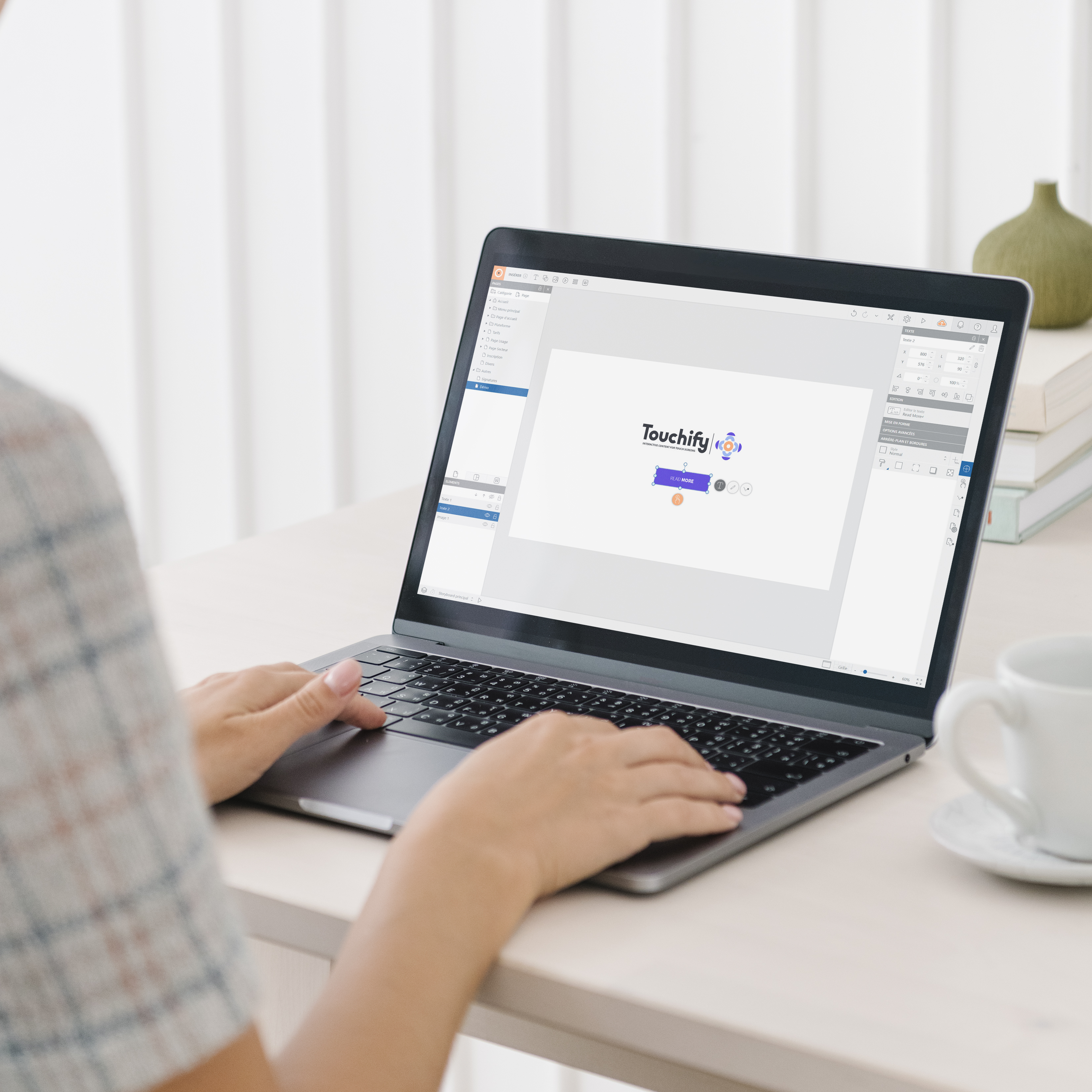
That’s it! You want to start digital signage! But when it comes to choosing your software, you are a bit lost, especially between free software and paid platforms.
So, can we really create a high-performance digital signage project with a free offer?
In this article, we will return to the pros and cons of free software and you give some clues to explore so that you can make your choice.
What is digital signage software?
The digital signage software allows to create, manage and broadcast information on all types of screens. The most advanced solutions allow you to create content through integrated tools, manage the distribution of playlists, update content in real time....
Free Digital Signage Software: The Benefits
1. Price
It is obvious, but the first advantage of a free digital signage software is precisely that it costs nothing! You can build your first project now, without committing a budget on the software part, and thus evaluate the benefits of this communication tool for your company.
2. Simply to use
Often designed intuitively and offering only the essential features, the interfaces of these software allow the most novice users to create and broadcast dynamic content on their screens.
3. Customisation
You will quickly see: fully free digital signage software is mainly designed in open source. For the most advanced users who master the development tools, full access to the source code makes it possible to adapt the software to their specific needs.
4. Community support
Using an open source solution means joining a community and an active network of users. This community can give you valuable tips and help you find solutions in case of problems.
Disadvantages
1. Limited functionality
If you have specific needs in terms of display customization, connectivity with your existing tools or user management, it is likely that you will soon find yourself limited by the basic features of free digital signage software.
2. Display of advertisements or watermarks
Some display software may include advertisements or watermarks on the broadcast content. This is particularly the case for trial versions of paid software suites. In terms of image, your visual communication will inevitably be impacted.
3. Technical implementation
If the interfaces can be simple and easy to use, setting up a free digital signage software is sometimes more technical and requires more time, especially because it requires computer skills in setting up servers and configuring hardware.
4. Limited scalability
Free digital signage software can quickly limit your communication, which can become a problem when your business needs change. The digital world is constantly on the move, so it’s important to consider when making your choice.
5. Limited technical constraints
Free digital signage software often limits content creation to the most common formats and is rarely compatible with a wide choice of operating systems.
16/9 digital display, stretch screen, interactive terminal, touch table, projected display... Depending on the device, the display resolution, and therefore the resolution of creating a project, will be different. It is therefore important to check that the digital signage software does not impose a limit on you.
For example, a digital signage with a standard 16/9 format in 1920 x 1080 pixels will not be able to be shared on an ipad 2 (for example) in 2 732 x 2 048 format without distorting your creation.
Examples of free digital signage software
Anthias
Anthias digital signage software is an open source solution. Its particularity is that it is specifically developed to work on Raspberry Pi. Each screen must then be managed individually in order to plan the distribution of your content: images, web pages and videos. To start, you will have to go to the Github hosting service.
Concerto
Concerto is another open source digital signage software. Its operation relies on a web server running Ruby on Rails applications and a database, in MySQL format for example. You can then import your media (images, videos...) and create your own playlists. It is compatible with Windows and Mac OS.
Digital Signage
Also based on an open source framework, Digital Signage is available using the Apache registry. This digital signage software allows you to create a simple project and broadcast it to a screen. It supports HTML5 and flash formats, HD videos or the MRSS extension.
Info-beamer
Another software running on Raspberry Pi, Info-beamer offers a free digital signage offer to benefit from a user dashboard and broadcast its content, including 4K videos, on a single device. On the installation side, it also requires an SD card in order to copy the installation files.
Xibo
Xibo also offers its open source software to start a digital signage project without committing a budget. Same solution, same principle: you will also need your own web server. The Xibo client application ensuring the distribution of your media (flash animations, videos, powerpoints...) is compatible with Ubuntu and Windows.
Why opt for paid software?
1. Advanced features
Paid digital signage software offers many advanced features that are not found in free versions. Examples include advanced authoring tools that allow you to imagine content without using third-party software, extensive customization options and templates tailored to market specificities, connection to business tools or devices, complex organization management with screens spread over several sites, management of user teams...
2. Support
Paid digital signage software is often accompanied by technical support accessible by email and/ or phone. This ensures that users receive prompt support in case of problems, regular updates, and effective resolution of technical issues. This support also helps companies make the most of digital signage through training.
3. Enhanced security
Security is of course a major topic for many companies. Paid digital signage software invests heavily to address issues of content access or user management: authentication, data encryption, verification and monitoring, data duplication, GDPR compliance... They also offer solutions to secure access to content broadcast on screens.
4. Scalability and integration
Paid digital signage software is often designed to be scalable to allow businesses to adapt to their needs. In addition, they generally offer better integration with other internal systems such as databases, content management systems, or business software. This interconnectivity improves the overall operational efficiency of organizations.
Why should you trust Touchify?
Touchify offers digital signage software to animate all screens. By bringing together digital signage and interactive experiences, the company addresses all sectors of activity.
Extended compatibility with screens and operating systems
- All technologies: 16/9 digital display, stretch screen, interactive terminal, touch table, projected display...
- All operating systems: Android, Windows, Linux, Tizen, Chrome Box, player BrightSign...
Remote deployement
In the most complex configurations (network of brands, restaurant chains, companies with multiple subsidiaries in the world...), it is essential that the digital signage software allows to deploy presentations anywhere, at any time, in one click, and by any user, and especially with what ease.
The advantage of a SaaS software is that it allows you to simply deploy a project in real time by installing a playback player on the screen and associating it with the desired broadcast group.
Broadcasts program
Recurrence, periodicity, .... In order to simplify the management of your communications, the planning tools make it possible to define the broadcast dates of your displays, the time slots, and this whatever your broadcast groups or your screens. You can also define your playlists.
Offline operation
It does not matter if you use a SaaS software with remote servers, a custom-made solution on-allowed, a free display software, a paid platform... Is your publisher able to manage an offline mode so that your company’s content is broadcast on your screens no matter what?
Secure kiosk mode
You want to use your presentations on a totem positioned in a public place? Kiosk mode locks content to prevent users from browsing the internet or changing your project settings. In addition, kiosk mode simplifies the use with an automatic start of the screen on the content, without human intervention.
The management of the screen park
Who says multi-site companies or marketing services of large groups says multiple communications on a park sometimes very heterogeneous. The advantage of SaaS digital signage software is that it allows you to simply deploy a presentation by installing a player on the hardware and associating it with the broadcast group using code. You can also organize your park with broadcast groups and set display conditions to target a particular group.
Management of interactions and animations
If you just want to stream a playlist of documents, you can take a solution with basic features. But if you want to optimize the customer experience and bring dynamism to your speech, be interested in the interactions and animations offered by your software provider. It can be transitions between elements, animations to call to action or to go further by creating a real synopsis.



